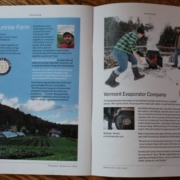Sponsorship Opportunities
Vermont Almanac is looking for like-minded businesses and organizations who are interested in supporting our work through sponsorship. We’ll highlight our sponsors at the end of each chapter in the book — full page and half page slots are available. Please contact Amy Peberdy (amy@vermontalmanac.org) to learn more.

